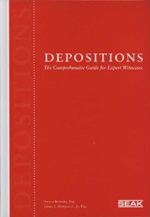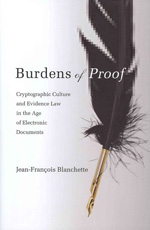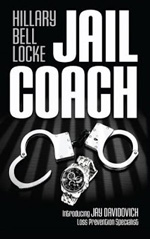 Verdict: Touchdown!
Verdict: Touchdown!
How To Prepare Your Expert Witness For Deposition
By James J. Mangraviti, Jr. & Steven Babitsky (Falmouth, MA: SEAK Inc. 2012). 376 pgs. $130. Order, www.store.seak.com.
Reviewed by Richard H. Ebbott
The need for expert witnesses in law practice has greatly increased in recent years. Generally, expert testimony is allowed when without it a jury would be unable to understand the subject matter or when the expert testimony would otherwise be helpful to the jury. In addition to explaining complex subjects, experts perform the tests on which they base their opinions. If your opponent hires an expert, you need to hire an expert too, if for nothing more than the nullifying effect of opposing experts.
I’ve used experts many times. In a homicide case, experts testified concerning the distance from the gun to the victim to prove which of two shooters fired the fatal shot. Sometimes an expert is necessary for the technology rather than the opinion. Sometimes the opposing expert is so convincing that the case settles.
Want to review a book?
The following books are available for review. Please request the book and writing guidelines from Wisconsin Lawyer managing editor Karlé Lester, at klester@wisbar.org or (608) 250-6127. Reviews of about 500 words are due within 45 days of receiving the book.
- Intellectual Property for the Medical Professional, by Joseph S. Heino (Bradenton, FL: Booklocker.com, Inc., 2013). 109 pgs. $13.95.
- The Mediator’s Handbook: Revised & Expanded Fourth Edition, by Jennifer E. Beer & Caroline C. Packard (British Columbia, Canada: New Society Publishers, 2012). 208 pgs. $29.95.
- The Spirit of Want, by William H. Coles (Bloomington, IN: AuthorHouse, 2011). Fiction. 284 pgs. $10.95.
- Strategies in the Defense of Charges of Driving Under the Influence of Alcohol or Drugs, by S.A. Schapiro (Milwaukee, WI: New Millenium Publishing Co., 2013). Unbound draft, 53 pgs. $40.
At other times, an expert may be needed because the subject matter is unusual. In one case, the plaintiff fell off a horse when part of the saddle broke. My expert testified that the saddle was not defective when sold but later was subjected to severe stress, probably by a horse trying to get it off. In another case, experts disputed whether my client was negligent in the way he saddled his horse; one expert said the horse’s actions were merely a consequence of the hazards of being around horses.
How To Prepare Your Expert Witness For Deposition is a comprehensive and excellent resource, from the executive summary in chapter 1 to the sample questions as a summation to the index. I found the practice pointers in each chapter of particular value. I agree with the authors that having an expert answer a general question with a “headline” and then follow up with “bullet points” should be employed with every expert, every time. This not only gives the expert a way to deal with opposing counsel, but in this world of visual images and sound bites, it is effective in getting the message across to listeners and to readers, whether the deposition is read by opposing counsel, a judge, or an attorney in some form of alternative dispute resolution.
Although most lawyers use expert witnesses, we do not invest the time or money recommended by the authors and we probably have not hired anyone to prepare our experts for us. Therefore, chapter 5, “Deposition Advice for your Expert Witness,” might be of particular benefit. I also enjoyed the portions of the book that warn against educating opposing counsel. Although opposing counsel usually knows everything anyway, it is sound advice for working with your expert so nothing is unnecessarily divulged. Other subjects in the book include where to conduct the deposition, what the expert should wear, the expert’s demeanor, what to expect from opposing counsel, how to deal with difficult or trick questions, and how the deposition fits into your case.
It would be helpful to have the book’s voluminous information ranked in priority order so readers could determine how much is needed in a particular case. Also useful would be guidelines for evaluating your own expert when you are preparing for deposition, as would be more discussion about experts’ handling of visual effects such as photographs, charts, and graphs. Finally, perhaps a short discussion of when to get outside help in preparing your expert would be useful.
Depositions are a fact of life in a litigation practice. Experts are involved in much of that litigation. I recommend using this book for its stated purpose and then using it to critique your own experts after they have been deposed. Finally, I would turn everything around and use the book as an aid to prepare for the depositions of your opposition’s expert.
Richard H. Ebbott, U.W. 1967, formerly a Rock County assistant district attorney, practices law in Flint, Mich., primarily doing civil trial work.
 Verdict: Not for Me, Maybe for You
Verdict: Not for Me, Maybe for You
Burdens of Proof: Cryptographic Culture and Evidence Law in the Age of Electronic Documents
By Jean-Francois Blanchette (Cambridge, MA: MIT Press, 2012). 276 pgs. $30. Order, mitpress.mit.edu.
Reviewed by Jeffrey J. De La Rosa
Although a relatively short read, this is a very dense book that provides an overview of cryptographic history and the problems and possible solutions regarding the lack of widespread adoption and evidentiary acceptance of digital signatures (aside from the context of package-delivery and retail purchases). The book, full of technical jargon and complex mathematics, appears to have academics and cryptography professionals as its target audience. It explores the evidentiary challenges that exist as technology advances and paper documents disappear or are converted to digital format at some point in their life cycles.
Using digital signatures as a case study, Blanchette examines the evidentiary problems and barriers to societal and legal acceptance of digital signatures and online documents. The author points out that signatures on paper documents have evolved to be a cornerstone of government and law (and bureaucracies), and then discusses why digital signatures have not yet gained similar widespread legal acceptance despite digital signature technology having existed for many years.
The first two chapters introduce cryptography and its history from the Greek and Roman empires through secrecy efforts of the warring nations in World War II to present-day efforts to secure data and communication.
The book then describes various revolutions in cryptography and how those revolutions failed, in spite of mathematical certainty and security, to establish widespread acceptance and trust in cryptography. There is intense discussion of mathematics as the basis for current cryptography, which is much more attractive and secure than previous efforts at securing digital information. Then the author discusses efforts at producing a digital equivalent to written signatures, the secure, algorithm-based digital signature, and other complex mathematical functions.
The final two chapters discuss the fact that law, government, and life have built processes and trust around the use of paper and signatures on paper as evidence of various transactions. The author ends with his thoughts on how to move forward in the digital realm by connecting with the physical realm and taking lessons from it.
This is not a how-to book on how to get society to further accept electronic documents or how to litigate concerning or lobby for or against digital documents or signatures. What the book does do effectively is highlight the complexity of paper and signatures and argue that moving to digitized documents and signatures necessarily requires understanding those philosophical and psychological underpinnings. Blanchette strongly urges using that understanding to guide efforts to establish an evidentiary framework based on current math-based cryptography.
Jeffrey J. De La Rosa, U.W. 1999, is an attorney with the State Public Defenders Office in Jefferson.
 Verdict: It’s a Keeper
Verdict: It’s a Keeper
Jail Coach
By Hillary Bell Locke (Scottsdale, AZ: Poisoned Pen Press, 2012). 258 pgs. $24.95 (hardback), $14.95 (paperback). Order, www.poisonedpenpress.com.
Reviewed by Dianne Post
Jail Coach was a fun, fast read that took me zipping down a lot of alleys on a quiet Christmas Eve. The main character is a very likeable detective of sorts, and the dialogue is quite clever and funny. The line, “Coming to me for advice about chicks is like asking George W. Bush to help you with your particle physics homework” had me in stitches for some time – and still does.
The schemes seem at times a bit too clever. Although I have never been a criminal defense attorney or prosecutor, I don’t consider myself naïve about the criminal world: I did work on domestic violence and trafficking in Russia, Ukraine, and Albania after all. Some of the references and scams, nevertheless, went over my head until many pages had passed, but maybe that’s a good thing. Some books are entirely too transparent.
The beginning is a little talky, with too much description of people we don’t yet know or care about, but the author soon picks up the pace. Some transitions could be smoother. Characters do some stupid things – but then people do. The political messages, while subtle, will turn off some readers – as they did me – but the ultimate message is a positive one. It’s a good winter-night-at-the-fireplace-with-a-cup-of-hot-cocoa kind of enjoyable read.
Dianne Post, U.W. 1979, practiced family law for 20 years and for the last 12 has primarily worked on international human rights related to sexual and gender-based violence.
